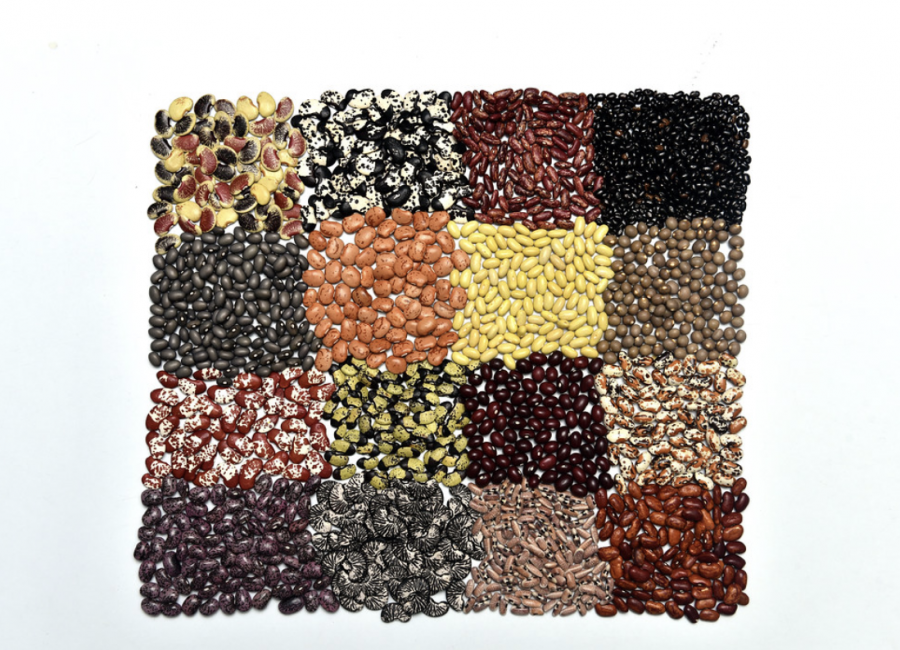Culturally Driven Cuisines
Diverse Bean Blend Resemble Medley of Influences in Contemporary Culinary Culture.
January 4, 2021
Food preferences are individually and culturally significant. Comfort foods convey our senses, our background, and our story of life. Food itself is an identity, a means of survival, an indicator of status, a guilty pleasure, a medium to converge the community together, and a reminder of humanity.
The French cuisine, along with its neighbor Italy, are made up of numerous foods distinct to each and every region. The same goes in line for Chinese and Mexican fares. In America, food is also going by a similar trajectory, one being less monolithic but rather getting increasingly localized as opposed to globalized.
Dining in America goes hand in hand with its yearlong availability of fresh produce and dry pantry ingredient staples. With poor harvest being a rarity, America never depends on crop rotation as often as places on other continents to subsist. In Japan, there is a tendency to serve buckwheat soba noodles next to brown rice. For the inhabitants of India, in addition to the aforementioned France and Italy, legumes are served in conjunction with whole einkorn wheat.
Their flourishing nature of adaptive competence with their thriving cultivation spurred them to integrate being on board with what is at their disposal. In turn, it draws parallels to how these aspects of their food culture ties into what they feel like, as citizens of their respective countries at the end of the day.
There is a pattern weaved into the fabrics of several different food cultures around the world. It revolves around the modern values of having a healthy and active lifestyle.
From the sea to sea, the idea for consuming adequate amounts of protein on a daily basis is in continuation on a large scale. Not only does this benefit athletes, who are in a greater demand of protein for muscle synthesis and optimal performance, it is phenomenal for everyone alike.
Common culture and religious practices here and there utilized food amidst their celebratory events, as this is manifested universally. No holiday, harvest, or season is complete without their unique bites.
As Asian immigrants are yet to precisely diffuse their “specialty dishes” without foreign twists abroad, they still feel at home with more authentic ones within their households. Driven by economic measures, Asian food found in various takeout restaurants in America is epitomized by natural selection. Chefs with Asian heritage solely strive to get food on the table for their families without bearing in mind the true tones of their plates. They do the best to assemble dishes with what is reachable.
Rewinding back in historical times at the turn of the 20th century, an influx of Pan-Asian-Americans brought fried egg rolls and sesame orange chicken, in tandem with crunchy fortune cookies, to the United States from their faraway origins. As the century got underway, Peking and Szechuan styles arrived at the scene from a wide array of provinces. Concurrent with this time frame when reminiscing upon the past, younger generations were ironically indulging food reflective of what outsiders perceive as the “real deal.”
Due to boisterous mornings, afternoons, and evenings, they fancied browsing through farmer’s markets in broad daylight, but picked out the most simplistic items to prepare. Yet, when they embarked on cooking mainstream meals, they went off the course to bring about fast and easy ones. With the expansion of the popular fast food industry, people in this era were less likely to be educated on how to make hearty meals, so they were prone to the reliance on eating out frequently, as they snubbed on home cooking and the nostalgic homesickness behind its vibes.
As a result, the preservation of authenticity took a toll in wake of this period. Luckily in today’s day and age, this no longer is an issue, let alone a thought in the back of minds, as the art to perfect and protect exotic flavors has since been revitalized and reinforced as a melting pot in the world of food and its flairs.
The pendulum swing of assimilating to international tastes is more and more solidifying itself as a placeholder for the steps in the social hierarchy. Before, the accessibility of delectable delicacies represented how one would be profiled in society.
Take Asia again, for one instance. These aspects meant splurging on lobster tails or shark fins. Fast forward to right now, values in imported goods are placed in more inventories like coffee brands or assorted boxes of chocolate. This shift narrows down to the emphasis heightened upon material goods sold from multifaceted appeals.
Mealtime never deviates from an opportunity for closed ones to socialize and give a recap of their endeavors. Dishes have a likelihood to be shared among one another. Food is cherished, as their presentation is captured through not only photographs but also vivid memories. When out and about to wait in line at a restaurant, it is perceived to be a burden, but it truly is part of what makes the scope of etiquettes genuine.
While many individuals lean towards satisfying their palates, others do it for the textural complexities. Harmony is achieved by savoring the hints of sweet, salty, spicy, sour, bitter, and umami piquancies. Chilled foods are in tune with the sweltering heat of the summer, whereas warmed foods await to offset the frigid temperatures of the winter. Royalty feasted upon the most lavish items at the beginning of their banquet. On the contrary, the everyday buffets splash out the most filling yet inexpensive features of their inventory to keep expenses low and supplies high. In other words, they get the easy way out to profit.
Flying back to France, its residents enjoy food more for its pastime pleasures. They commence their mornings with baguettes, pain au chocolat croissant, fresh cream, and fruit preserves, paired alongside a hot beverage like a cup of coffee. They relish the time to spread the fresh cream onto their baked loaf of bread and pastries, and then lather a layer of sweetness on the top. They proceed to ease through by dipping and submerging the pieces into their aromatic drinks. This conventional favorite stays consistent due to its convenience factor.
Switching gears to Italy, its style of food consumption simply narrates what entails the sights and sounds of their upbringing. Pertaining to people’s habits, takeout sways more on being seldom than not, as a rapid pace to grab quick bites is absent from their culture. Meals are intended for an escape from stress and an outlet for relaxation. This stays cohesive down to their lunch breaks and snack times.
It is all about being down to earth, prior to introducing nutritional profiles, glimpses of history, and the presence of pleasure. As the youth experiences their initial encounters with food, it is not about parents encouraging fruits or vegetables, but rather gelato and panna cotta. Above all, food accounts more for the general emotions and feelings here, as opposed to wealth and status in aforementioned places.
Sliding from the sandy dunes and refreshing oasis of the Arabian peninsula, food here sticks to putting the community at the forefront. With a population predominantly in observance of Ramadan, they tend to maintain an empty stomach during designated durations of this holiday. They seek to sit down with their peers to have food together, after fasting from sunrise to sunset.
It is absurd for other cultures to primarily pick up foods with both hands for morsel after morsel, but not for those native to this region. With flashbacks to the Chinese table manners, both Central and Eastern Asian countries specifically have joint platters in common, alike allocating private portions for individual intake.
Ultimately, the art of placing prized food on the pedestal breaks down second to none into how humans are sustained by the natural landscape. It is an exhibition of the relationship between a species and its habitat in the biosphere, where traditions and the ecosystem link up. Considered more pertinent to culture than linguistics and cartography, cuisine is intrinsic, given its association with the innate five senses long in human lineage. The first anthropological instincts are to obtain an energy source to fuel the body, and ensuing ones provide a portal to go create footsteps in learning how to go as far as oneself envisions.







